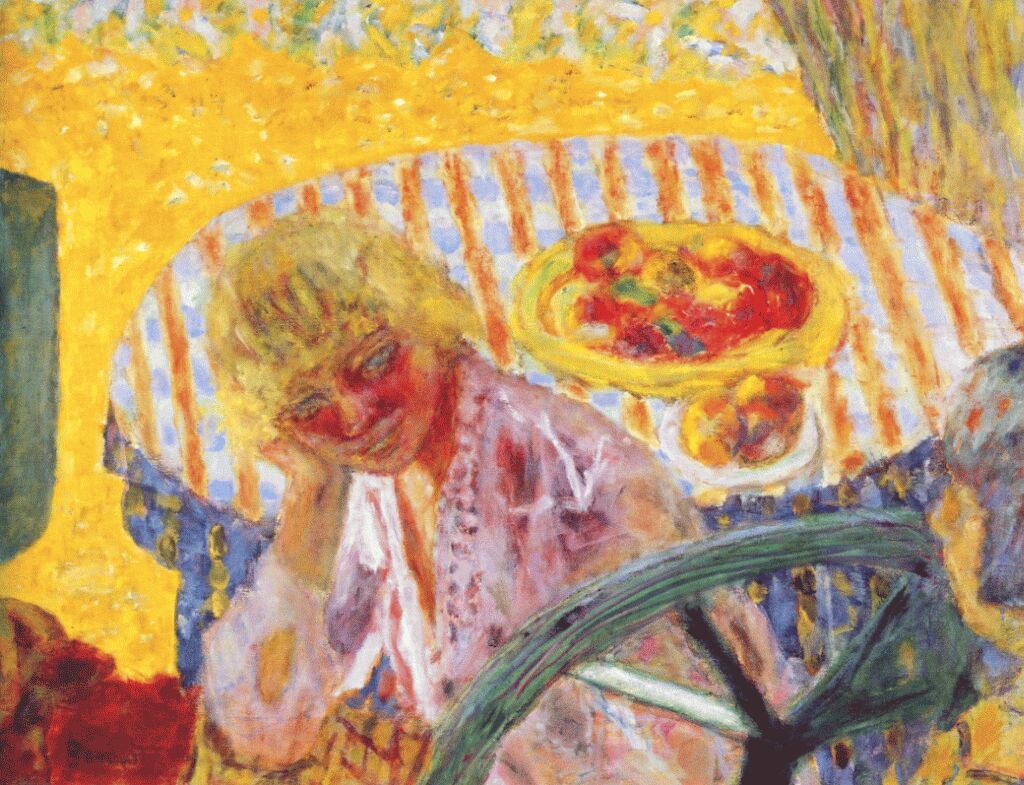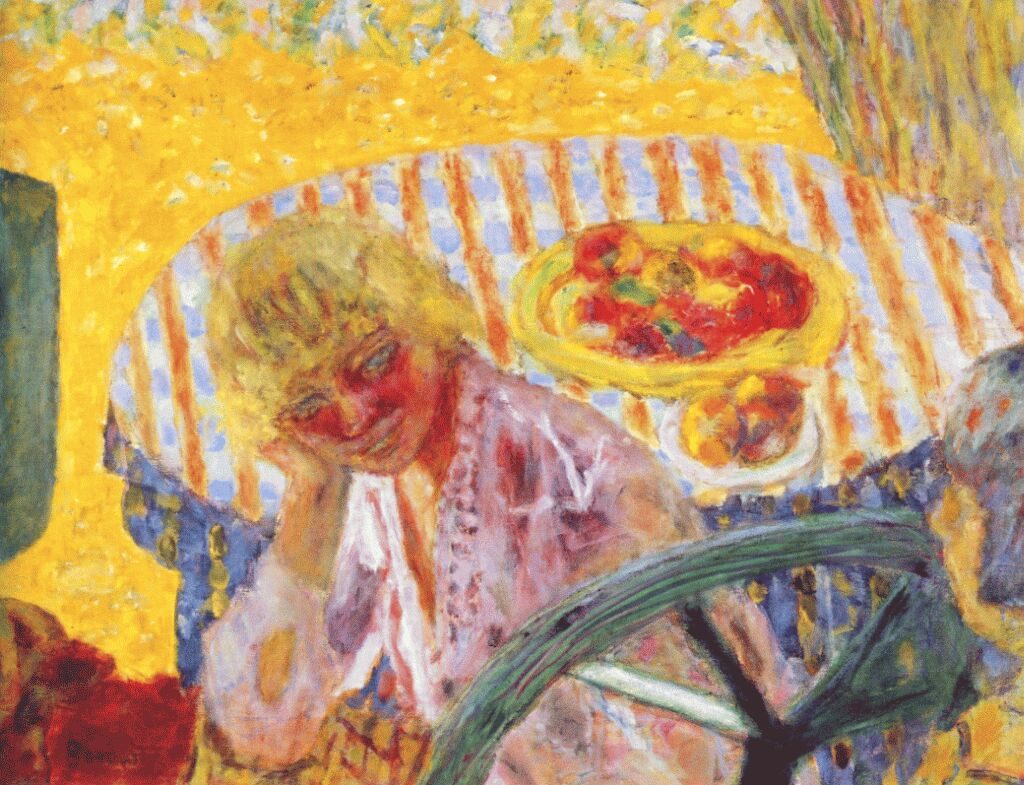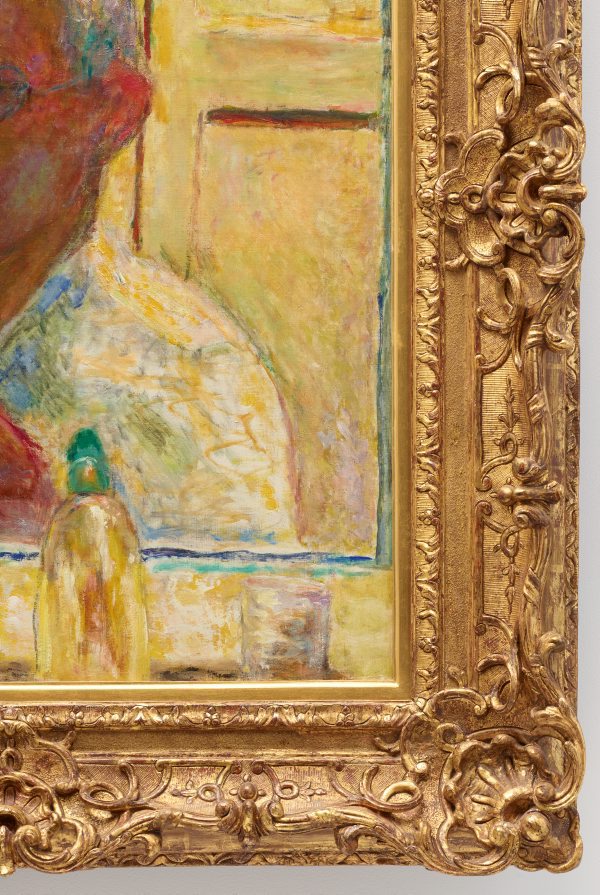Bonnard's dining room paintings are a beautiful and intimate glimpse into the artist's personal life. Through his use of color and composition, Bonnard captures the warmth and familiarity of domestic scenes, particularly those set in the dining room.Bonnard's Dining Room Paintings
One of Bonnard's most famous paintings is simply titled "The Dining Room." This piece, completed in 1913, depicts a scene from the artist's own dining room in his home in Vernonnet, France. The painting is a prime example of Bonnard's use of vibrant colors and flattened perspective to create a sense of intimacy and coziness.The Dining Room by Pierre Bonnard
Bonnard was known for his interior scenes, which often featured his own home and family members. These paintings provide a unique glimpse into the artist's personal life and relationships. The dining room was a common subject in Bonnard's interior scenes, as it was a central gathering place for meals and conversation.Bonnard's Interior Scenes
The dining room was also a setting for many of Bonnard's domestic scenes. These paintings often depicted everyday activities such as preparing and sharing meals, reading, or simply enjoying each other's company. Bonnard's use of bold colors and patterns in these scenes adds a sense of vitality and joy to the mundane tasks of daily life.Bonnard's Domestic Scenes
While the dining room was a common subject in Bonnard's paintings, it was not always the main focus. In some of his still life paintings, the dining room table and its contents serve as a backdrop for the objects he chooses to highlight. These paintings showcase Bonnard's skillful use of color and composition to create dynamic and visually striking compositions.Bonnard's Still Life Paintings
One of the defining characteristics of Bonnard's dining room paintings is his use of bright and bold colors. He often used a vibrant color palette, with a particular focus on shades of red, pink, and yellow. This use of color adds warmth and vitality to his interior scenes, inviting the viewer into the space.Bonnard's Colorful Interiors
In addition to his use of color, Bonnard's dining room paintings also convey a sense of intimacy and privacy. The scenes are often depicted from a close perspective, with the viewer feeling as though they are a part of the family gathering. This creates a sense of familiarity and comfort, making the viewer feel welcomed into Bonnard's world.Bonnard's Intimate Spaces
Bonnard's dining room paintings are also a reflection of his family life. He often included his wife, Marthe, and their beloved dog, Black, in his interior scenes. These paintings serve as a testament to the artist's deep love and connection to his family, and the dining room is a symbol of this familial bond.Bonnard's Family Life
Bonnard's dining room paintings are also representative of French art at the turn of the 20th century. As a member of the Post-Impressionist movement, Bonnard was interested in capturing everyday life and the beauty of ordinary moments. His dining room paintings are a perfect example of this, showcasing the beauty in the mundane.Bonnard's French Art
As a Post-Impressionist artist, Bonnard was also interested in exploring new techniques and pushing the boundaries of traditional art. In his dining room paintings, he often played with flattened perspectives, bold colors, and expressive brushstrokes. These elements add depth and dimension to his work, making his dining room scenes come to life on the canvas.Bonnard's Post-Impressionist Paintings
The Importance of House Design in Creating a Welcoming Dining Room

The Role of House Design in Setting the Mood
 When it comes to creating a warm and inviting atmosphere in a home, the design of the house plays a crucial role. The dining room, in particular, is a space where people gather to share meals and create memories. Therefore, it is essential to have a well-designed dining room that not only looks aesthetically pleasing but also sets the right mood for gatherings.
Bonnard's "The Dining Room"
is a perfect example of how house design can influence the atmosphere of a dining room. The painting portrays a cozy and intimate dining room, with warm colors and comfortable furniture. The
use of color
is especially noteworthy, as the soft yellows and greens create a soothing and inviting feel, while the red accents add a touch of warmth.
When it comes to creating a warm and inviting atmosphere in a home, the design of the house plays a crucial role. The dining room, in particular, is a space where people gather to share meals and create memories. Therefore, it is essential to have a well-designed dining room that not only looks aesthetically pleasing but also sets the right mood for gatherings.
Bonnard's "The Dining Room"
is a perfect example of how house design can influence the atmosphere of a dining room. The painting portrays a cozy and intimate dining room, with warm colors and comfortable furniture. The
use of color
is especially noteworthy, as the soft yellows and greens create a soothing and inviting feel, while the red accents add a touch of warmth.
The Power of Lighting in House Design
 Another important aspect of house design that can greatly impact the mood of a dining room is lighting. Natural light, in particular, is crucial in creating a welcoming and inviting space. In "The Dining Room," Bonnard uses natural light to illuminate the room, making it feel bright and airy. This not only enhances the overall ambiance but also makes the space more inviting for guests.
Proper lighting
can also help set the tone for different occasions. Soft, warm lighting can create a cozy and intimate atmosphere, perfect for a romantic dinner, while brighter, cooler lighting can be more suitable for a lively dinner party. With the right lighting design, a dining room can be transformed into a versatile space that can cater to different moods and occasions.
Another important aspect of house design that can greatly impact the mood of a dining room is lighting. Natural light, in particular, is crucial in creating a welcoming and inviting space. In "The Dining Room," Bonnard uses natural light to illuminate the room, making it feel bright and airy. This not only enhances the overall ambiance but also makes the space more inviting for guests.
Proper lighting
can also help set the tone for different occasions. Soft, warm lighting can create a cozy and intimate atmosphere, perfect for a romantic dinner, while brighter, cooler lighting can be more suitable for a lively dinner party. With the right lighting design, a dining room can be transformed into a versatile space that can cater to different moods and occasions.
The Impact of Furniture and Décor in House Design
 The furniture and décor in a dining room are not just functional but also play a significant role in the overall design of the space. In "The Dining Room," Bonnard's use of
comfortable, cushioned chairs
and
soft, flowing curtains
adds to the cozy and welcoming feel of the room. The
use of artwork
on the walls also adds a personal touch and adds to the overall aesthetic of the space.
When designing a dining room, it is essential to consider the
placement and style of furniture and décor
. A well-designed dining room should have a good balance of functionality and aesthetics, with furniture and décor that complement each other and create a cohesive look.
In conclusion,
Bonnard's "The Dining Room"
showcases the importance of house design in creating a welcoming and inviting dining room. From the use of color and lighting to furniture and décor, every aspect of house design plays a significant role in setting the mood of a space. By carefully considering these elements, a dining room can be transformed into a warm and inviting area that brings people together.
The furniture and décor in a dining room are not just functional but also play a significant role in the overall design of the space. In "The Dining Room," Bonnard's use of
comfortable, cushioned chairs
and
soft, flowing curtains
adds to the cozy and welcoming feel of the room. The
use of artwork
on the walls also adds a personal touch and adds to the overall aesthetic of the space.
When designing a dining room, it is essential to consider the
placement and style of furniture and décor
. A well-designed dining room should have a good balance of functionality and aesthetics, with furniture and décor that complement each other and create a cohesive look.
In conclusion,
Bonnard's "The Dining Room"
showcases the importance of house design in creating a welcoming and inviting dining room. From the use of color and lighting to furniture and décor, every aspect of house design plays a significant role in setting the mood of a space. By carefully considering these elements, a dining room can be transformed into a warm and inviting area that brings people together.






%2C-ca.-1925 small.jpg)












.jpg)











.jpg?maxwidth=1680&maxheight=1050)

















:max_bytes(150000):strip_icc()/bonnard-table-84af603a18af4d2b8dde7625c7942690.jpg)
+The+Dressing+Room+1892.jpg)










%2BTerrasse%2Bfamily%2B1900.jpg)

























